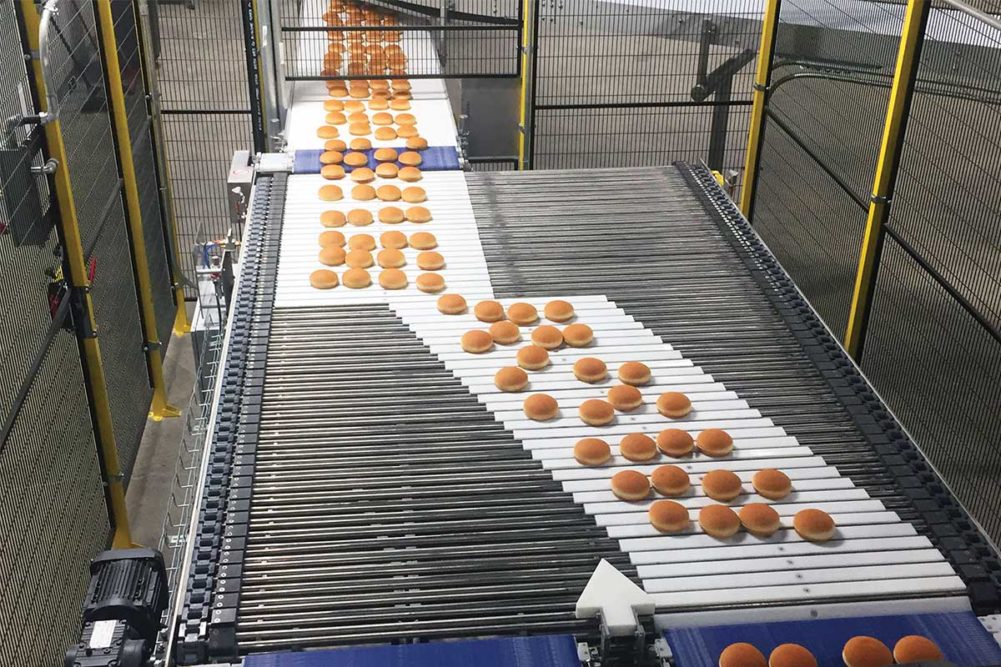Time is money and the simplest way to reduce scheduled downtime while improving sanitation is having equipment that’s simpler to clean.
That may mean conveyors with fewer catchpoints, such as sandwich joints or no exposed hollow areas, for food residue including allergens, said Jeremy Shall, bakery/snack North America team leader, Intralox.
“They’re also easier to clean if there is easy access to the inside and bottom for cleaning with minimal or tool-free disassembly and are compatible with cleaning systems such as vacuum or dry steam cleaning system,” he said.
Bob Harrington, vice president of sales and marketing, Capway Automation, noted that modular plastic beltings are designed with open-hinge construction to facilitate easy cleaning and less buildup within the belting. Brushes and scrapers help keep the belt surfaces clean during operation. Moreover, clean-in-place systems can be used if the application requires it.
Bernardo Zermeno, customer development director, Rexfab, suggested fully welded stainless steel frames, return rollers that can be removed without tools and removing niches on conveyors where bacteria can harbor.
“Belting options are growing every day in the hygienic design category,” he said. “The material designed should be non-porous, easily sanitized and made to handle chemical cleaning agents.”
A cantilever design allows operators to easily remove belts without dismantling the conveyor, advised Tom Trost, sales manager, Quantum Technical Services.
“The belt is on top of the motor, and the cantilever design allows you to easily un-tension those belts without any tools,” he said. “That really minimizes your labor and downtime.”
IPCO introduced laser cleaning of steel oven belts at last year’s International Baking Industry Exposition. Craig Bartsch, global sales and marketing manager, belts, IPCO USA, said this self-contained system can be employed on the bakery’s premises with minimal disruption to normal production. In most cases, he said, the oven belt can be cleaned in one day and adjacent lines do not need to be shut down.
Installed above the belt, the laser burns off carbon deposits, which are collected by a vacuum system. Once a strip has been cleaned along the full length of the belt, the laser head is moved across to the next section.
Rick Milner, product line support leader, Wire Belt Co. of America, recommended that bakers follow a written sanitation standard operating procedure and use equipment that meets or exceeds the hygienic design criteria as specified by the National Sanitation Foundation and the European Hygienic Engineering & Design Group.
These guidelines include conveyors that have no hidden areas and feature self-draining surfaces, open design and are free of crevices, grooves, uneven, rough surfaces or other impediments to cleaning.
“Cleaning a conveyor is not something that should be taken lightly,” Mr. Milner said.
This article is an excerpt from the March 2023 issue of Baking & Snack. To read the entire feature on Conveyors, click here.





